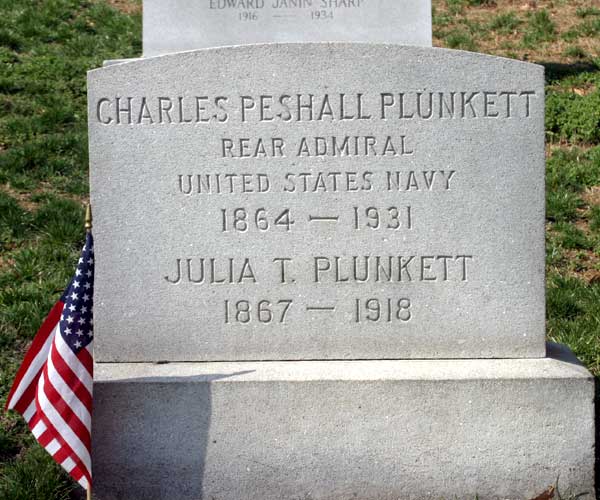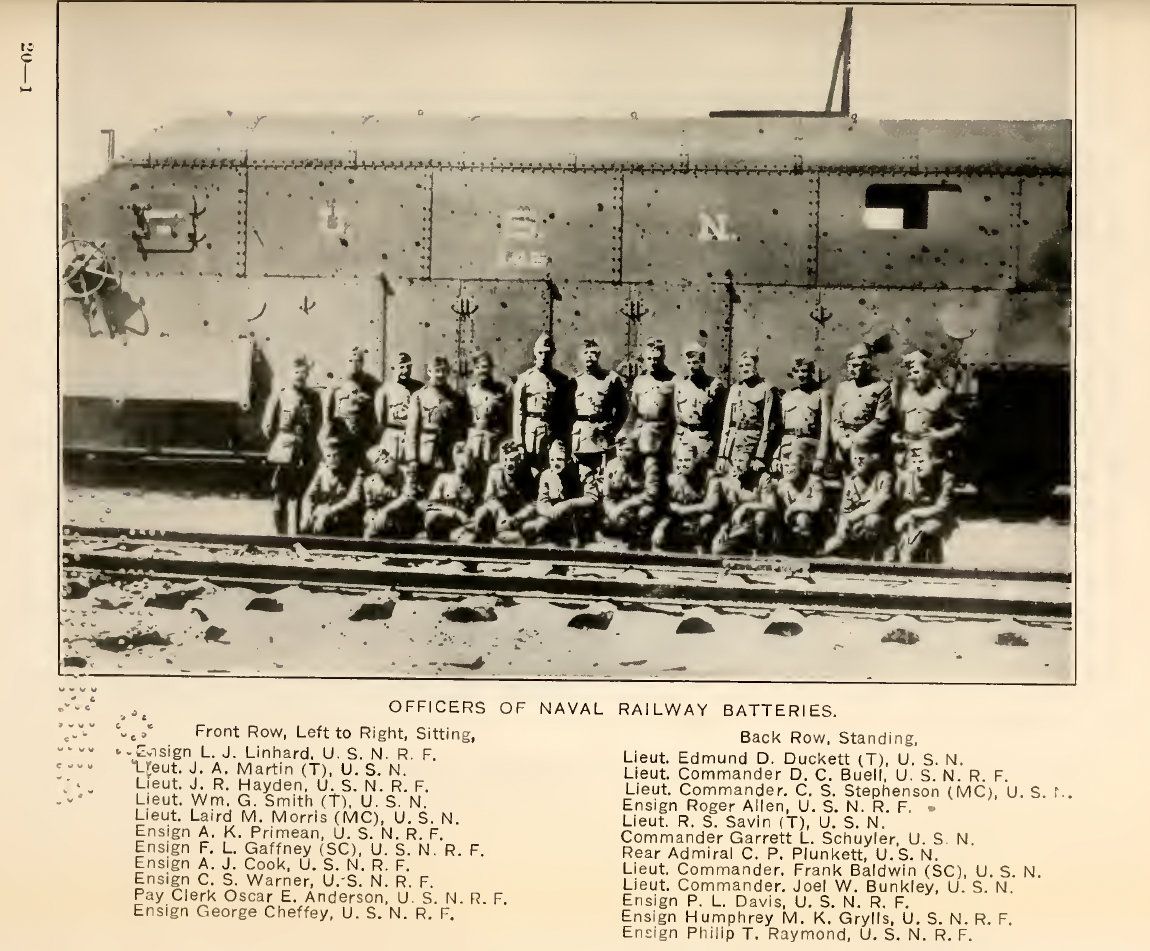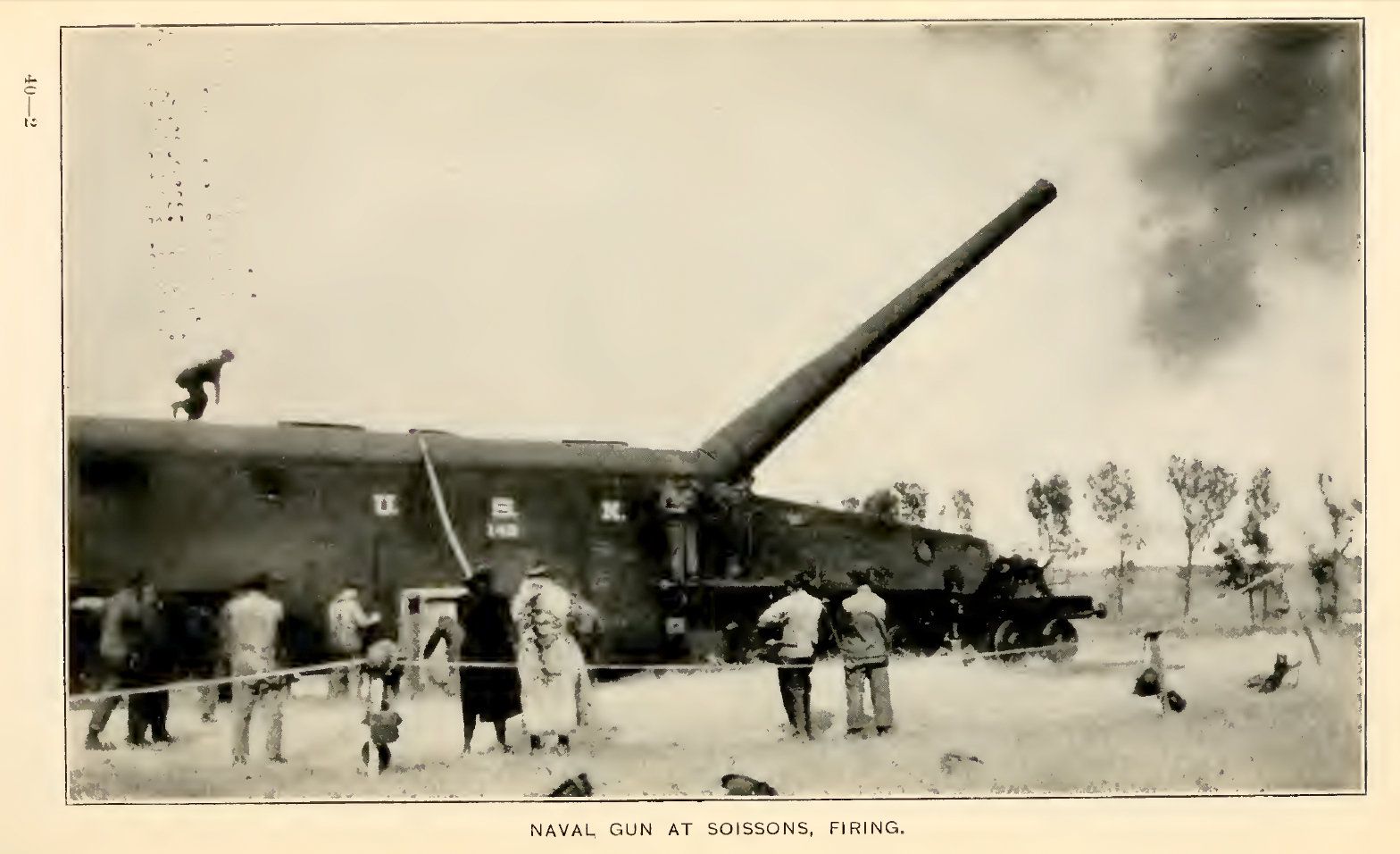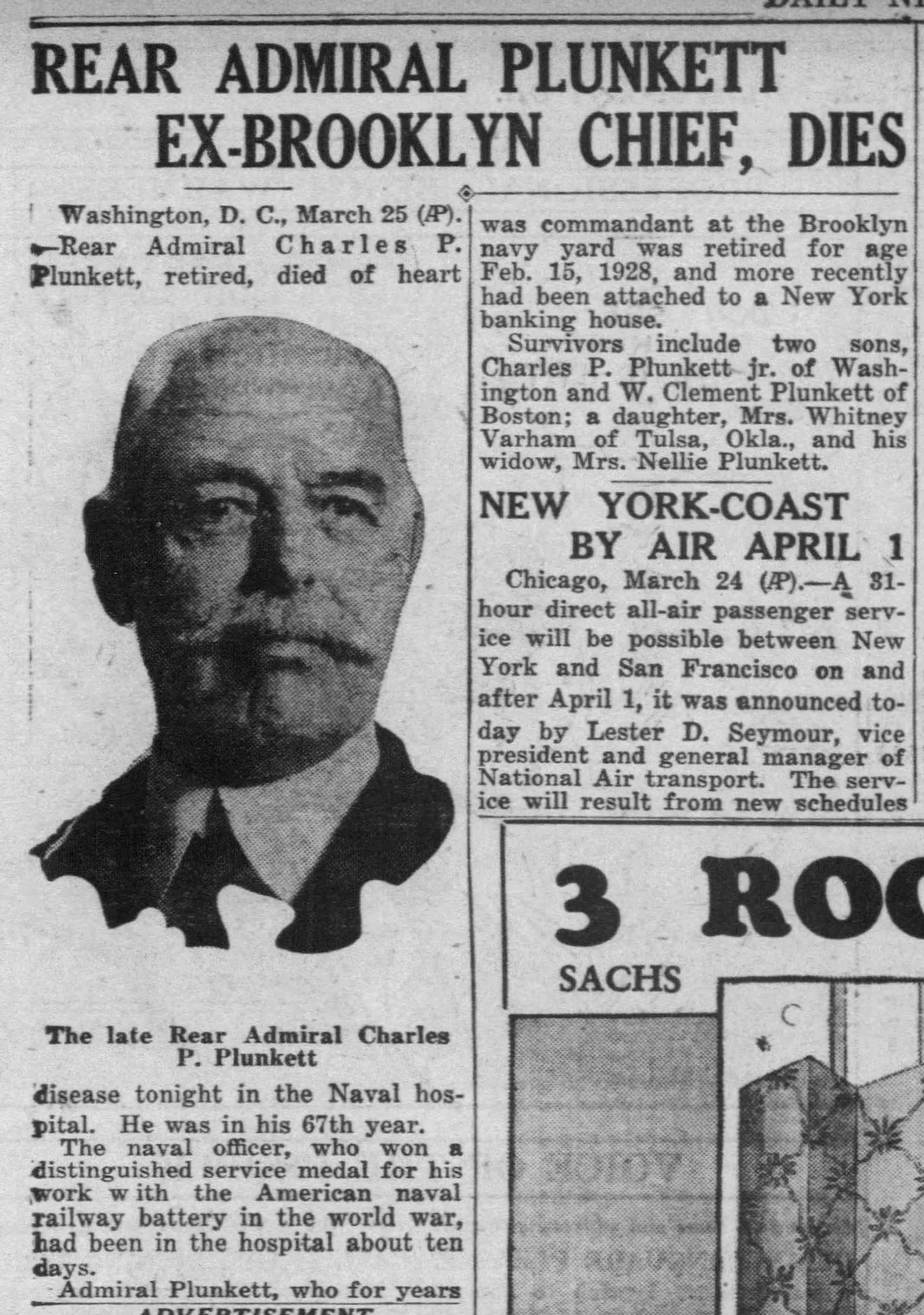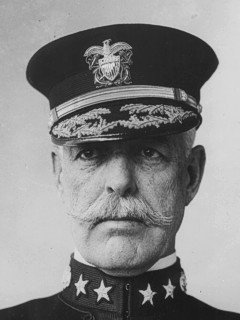He was the son of William H. Plunkett and Letitia Peshall Plunkett.
On September 6, 1886, he married Ruth Tuck (1863-1893), daughter of W.C. Tuck at St. Anne's Church with Rev. W.S. Southgate officiating.
They were the parents of one child.
On October 27, 1894 as Charles Peshall Plunkett, he married Julia Berret Tuck at Ascension Memorial Church at New York, New York.
They were the parents of three children.
On June 25, 1919 as Charles P. Plunkett, he married Nellie Egerton Fearn at Washington, District of Columbia.
They had no children.
Charles P. Plunkett graduated from the United States Naval Academy in 1884. By June 1, 1904 he was a Lieutenant Commander. On April 7, 1919 he was permanently promoted to Rear Admiral.
During World War I he served in various capacities from commanding Naval batteries with the French and American armies to commanding the United States Fleet destroyer force. After the War he commanded the Atlantic Fleet destroyer squadrons. He was appointed Chief of Staff, Naval War College in December 1920. He became President of the Board of Inspection and Survey in August 1921. He commanded the 3rd Naval District and the New York Navy Yard from 1922 to 1928.
He was awarded the United States Navy Distinguished Service Medal and the United States Army Distinguished Service Medal. He was a Commander of the French Legion of Honor and was awarded the Portuguese Decoration, Tower and Sword.
Time Magazine April 6, 1931
Milestones. Died. Rear Admiral Charles Peshall Plunkett, 67, United States Navy retired, Commandant (1922-1928) of the Third Naval District, New York; of heart disease; in Washington. His most famed exploit was to silence Germany's Big Berthas in 1918 by mounting a battery of long-range 14-inch naval guns on special carriages, moving them to the Allied front lines. This work, said General Pershing, left the enemy nothing but surrender or an armistice.
He was the son of William H. Plunkett and Letitia Peshall Plunkett.
On September 6, 1886, he married Ruth Tuck (1863-1893), daughter of W.C. Tuck at St. Anne's Church with Rev. W.S. Southgate officiating.
They were the parents of one child.
On October 27, 1894 as Charles Peshall Plunkett, he married Julia Berret Tuck at Ascension Memorial Church at New York, New York.
They were the parents of three children.
On June 25, 1919 as Charles P. Plunkett, he married Nellie Egerton Fearn at Washington, District of Columbia.
They had no children.
Charles P. Plunkett graduated from the United States Naval Academy in 1884. By June 1, 1904 he was a Lieutenant Commander. On April 7, 1919 he was permanently promoted to Rear Admiral.
During World War I he served in various capacities from commanding Naval batteries with the French and American armies to commanding the United States Fleet destroyer force. After the War he commanded the Atlantic Fleet destroyer squadrons. He was appointed Chief of Staff, Naval War College in December 1920. He became President of the Board of Inspection and Survey in August 1921. He commanded the 3rd Naval District and the New York Navy Yard from 1922 to 1928.
He was awarded the United States Navy Distinguished Service Medal and the United States Army Distinguished Service Medal. He was a Commander of the French Legion of Honor and was awarded the Portuguese Decoration, Tower and Sword.
Time Magazine April 6, 1931
Milestones. Died. Rear Admiral Charles Peshall Plunkett, 67, United States Navy retired, Commandant (1922-1928) of the Third Naval District, New York; of heart disease; in Washington. His most famed exploit was to silence Germany's Big Berthas in 1918 by mounting a battery of long-range 14-inch naval guns on special carriages, moving them to the Allied front lines. This work, said General Pershing, left the enemy nothing but surrender or an armistice.
Family Members
Other Records
Sponsored by Ancestry
Advertisement
Explore more
Sponsored by Ancestry
Advertisement










